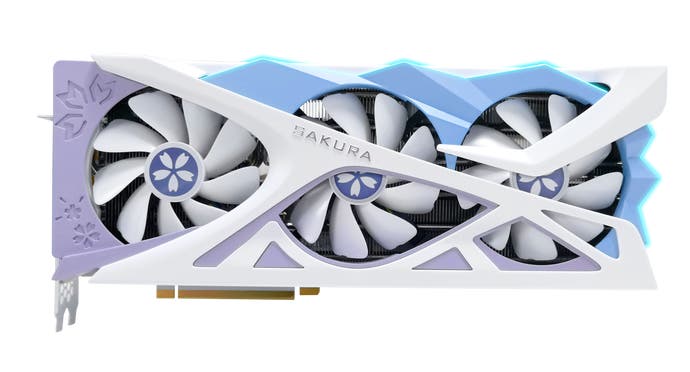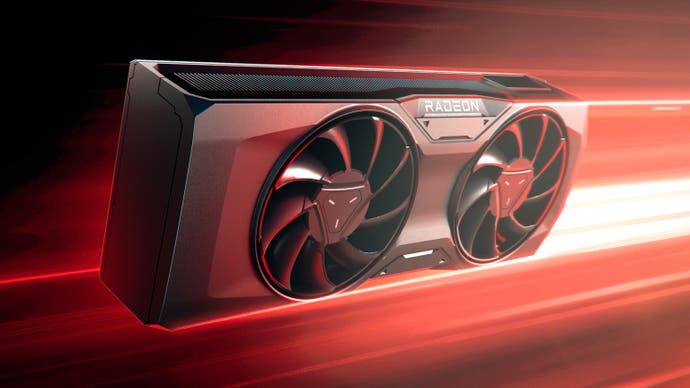AMD announces RX 7800 XT and RX 7700 XT graphics cards to face off against RTX 4070 and 4060 Ti
Finally filling the gap in the middle of the RDNA 3 lineup.
AMD has officially unveiled its RX 7800 XT and RX 7700 XT graphics cards, finally completing its RDNA 3 lineup after announcing its first GPUs in November last year. Both cards are intended to target 1440p displays and run games at max settings, including ray tracing, above 60fps. They'll also support AMD's exciting new frame generation technologies, which we've written up as a separate article after going hands-on with FSR 3 and Fluid Motion Frames at Gamescom.
Both graphics cards use the new Navi 32 GPU. The 7800 XT gets the fully-enabled 60CU version with a 256-bit memory bus, 64MB of Infinity Cache and 16GB of GDDR6 memory running at 19.5Gbps, while the 7700 XT is cut-down - but not by much at all. It uses a 54CU design with a 192-bit bus and 48MB of Infinity Cache, backed with 12GB of GDDR6 running at 18Gbps. TDP figures are also very similar, at 245W vs 263W, with the 7700 XT clocked higher to make up for its lower CU complement.
AMD's performance data looks impressive here, with the RX 7800 XT trading blows with the RTX 4070 and the RX 7700 XT more convincingly dealing with the RTX 4060 Ti. Both cards are also shown exceeding 60fps at max settings in a host of recent AAA releases, including The Last of Us Part 1, Star Wars Jedi: Survivor, Hogwarts Legacy and Call of Duty: Modern Warfare 2.

AMD points to leads for the 7800 XT against the RTX 4070 by up to 23 percent in Modern Warfare 2, Cyberpunk 2077 and Hogwarts Legacy, while being up to 18 percent behind in RT titles such as Dying Light 2, Marvel's Spider Man: Miles Morales, F1 23 and Doom Eternal. The 7700 XT is relatively more competitive, with up to a 31 percent lead in MW2 and only losing to the 4060 Ti by nine percent in Doom Eternal with RT.
The RX 7800 XT is available in an AMD reference dual-fan, dual-slot design, in addition to third-party designs from partners such as ASRock, Asus, Gigabyte, PowerColor, Sapphire and XFX. The reference model has three DisplayPort 2.1 ports and one HDMI 2.1 port, and takes two eight-pin power inputs. Meanwhile, the 7700 XT is third-party only, with no reference model.
Both cards offer noticeably more VRAM than their direct competitors, with 12GB on the 7700 XT and 16GB on the 7800 XT, which should inure them against some of the unjustifiably VRAM-heavy titles we've seen in recent months - particularly from high-profile PC ports from PS5. Based on the current state of play with the most recent titles, the 12GB of memory in the 7700 XT should prove particularly effective up against the 8GB 4060 Ti.
| RDNA 3 GPUs | RX 7600 | RX 7700 XT | RX 7800 XT | RX 7900 XT |
|---|---|---|---|---|
| GPU | Navi 33 | Navi 32 | Navi 32 | Navi 31 |
| Compute units | 32 | 54 | 60 | 84 |
| Game clock | 2250MHz | 2171MHz | 2124MHz | 2000MHz |
| Boost clock | 2655MHz | 2544MHz | 2430MHz | 2400MHz |
| GDDR6 memory | 8GB | 12GB | 16GB | 20GB |
| Memory interface | 128-bit | 192-bit | 256-bit | 320-bit |
| Memory speed | 18Gbps | 18Gbps | 19.5Gbps | 20Gbps |
| Infinity Cache | 32MB | 48MB | 64MB | 80MB |
| TDP | 165W | 245W | 263W | 315W |
| US MSRP | $269 | $449 | $499 | $899 |
Interestingly, both of the new GPUs use the chiplet ('MCM') design seen in the 7900 XT and 7900 XTX, versus the monolithic RX 7600, with a 200mm² 5nm graphics compute die (GCD) and 150mm² 6nm memory cache die (MCD). Transistor counts are 26.5B for 7700 XT and 28.1B for 7800 XT. For context, the 7600's monolithic die has 13.3B transistors, while the 7900 XT and XTX's Navi 31 MCM die has 57.7B transistors.
For creators, AV1 encoding/decoding, AMD noise supression and doubled performance in Stable Diffusion vs the 6950 XT were all mentioned in AMD's presentation.
The RX 7800 XT and 7700 XT are set to arrive on September 6th, where they'll be available from the usual AMD GPU makers. That date is also the Starfield release date, and given the existing links between AMD and Bethesda it's unsurprising that these GPUs also come with a copy of Starfield's Premium Edition.
Of course, we'll have to test these new graphics cards to see whether they fully live up to AMD's claims. Stay tuned.

